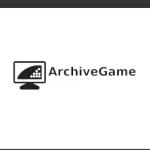Last Updated on: 31st December 2023, 11:16 am
Web site: (not active)
Category: Others
Platform: AIX, Linux, Solaris
License: unknown
Interface: CLI
Wikipedia: Wabi_(software)
First release: 1990
Wabi – a UNIX application that enables you to run Microsoft Windows applications on several Linux operating environments that use the X Window System. Wabi acts as an interface between the Windows world and the UNIX world, translating the language of Microsoft Windows applications to the language of UNIX and the X Window System.
The Wabi program lets you enjoy the benefits of the security, power, and connectivity of your Linux operating system, and on the same desktop, take advantage of popular Microsoft Windows applications such as spreadsheets, word processors, databases, graphics packages, and more. The best-selling applications have been tested extensively running in the Wabi environment. Applications that have been tested and certified compatible with the Wabi program are listed in the Wabi Release Notes, which are located on-line in the Wabi Tools group.
Wabi software is “middle-ware.” It resides between an application and your Linux operating environment. In general, the Wabi program works by intercepting a Microsoft Windows application’s request, and making an equivalent request in the Linux environment to deliver the desired result. The Wabi program carries out requests by translating Windows calls to X Window and UNIX calls.
In slightly more concrete terms, an application uses Windows API calls to open an icon, for example, and Wabi translates the request to equivalent X Windows calls. A print request, and any other request involving a device, is translated and redirected to an appropriate UNIX command or device. Much of an application’s “behind the scenes” activity involves Intel x86 instructions, which Wabi passes directly to the x86 processor.
Functions Supported for Certified Applications:
– Cut, copy, and paste between Windows applications
– Access DOS-formatted diskettes
– Run in enhanced mode
– Object linking and embedding (OLE) between Windows applications
– Dynamic data exchange (DDE) between Windows applications
– Network installation and use of applications
– Windows Sockets networking
The Wabi program supports displays with 1-bit, 4-bit, and 8-bit pixel depths. The Wabi program also supports 24-bit displays in 8-bit mode, not TrueColor mode. The X server for a 24-bit display must have available an 8-bit PseudoColor visual class in order for Wabi to display correctly. See Appendix B, “Color From Windows to Wabi,” for more information about 24-bit displays.




